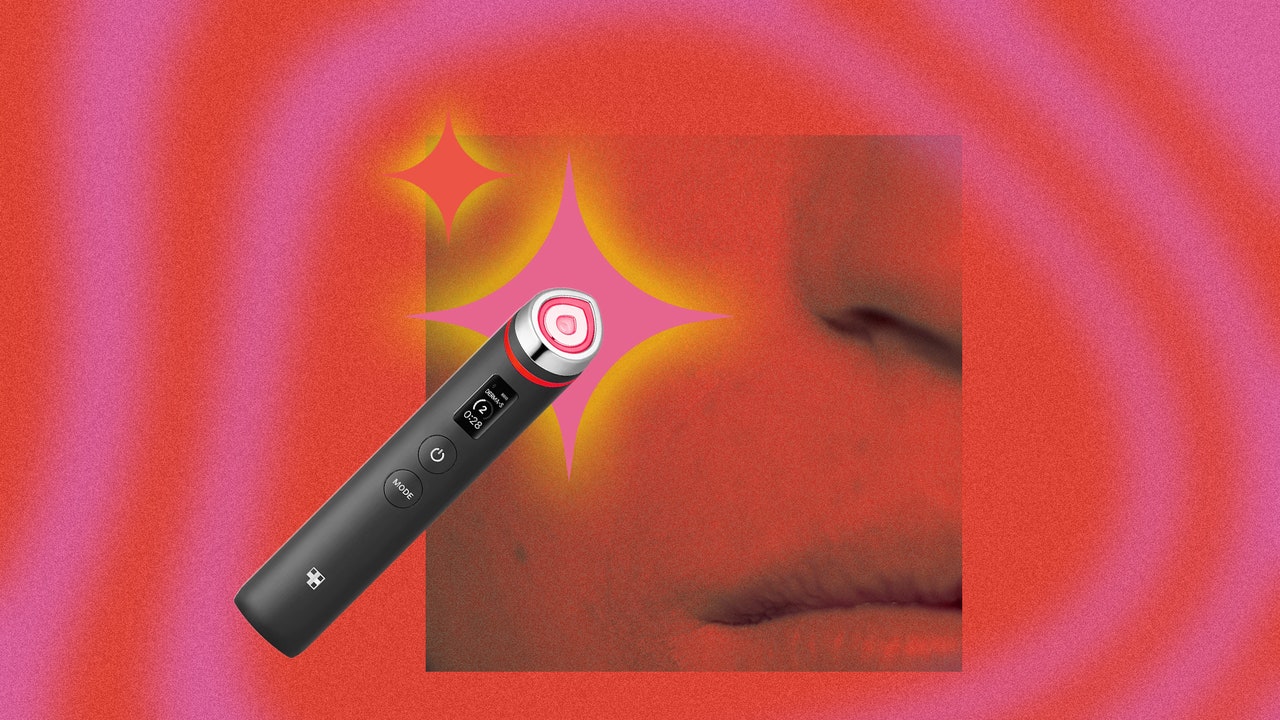“A facial nerve palsy is anything that causes a dysfunction of that facial nerve so that it doesn’t work the way that it should,” Dr. Anand explains. “And there are many different things that can cause a dysfunction of the facial nerve. A Bell’s palsy specifically describes an injury and inflammation of the facial nerve. It’s a weakness of the muscles of the face caused by inflammation of the nerve that supplies those muscles that goes from the brain to the muscles of the face.”
How common is Bell’s palsy?
As Medicube mentioned in it’s Instagram post, Bell’s palsy is a fairly common neurological disorder, a fact which Dr. Anand reiterates. “There have been a couple of different studies that look at how frequent it is,” she says. “I would say about half of all cases of facial nerve palsy are a Bell’s palsy, meaning that we don’t find another autoimmune disease or some other sort of specific cause. Depending on what study you look at, it’s something like five out of every 1,000 people.”
What causes Bell’s palsy?
There are certain conditions where Bell’s palsy can occur, such as pregnancy and Lyme disease. When those conditions are not present, inflammation from our own immune system in response to a chronic or low-level viral infection is likely the culprit.
“That’s what we see when we look at the nerves in people or animals who have a facial nerve palsy or have a Bell’s palsy,” she says. “There’s inflammation and the nerve becomes filled with these cells from our own immune system. It can cause swelling and some increased pressure along the course of the nerve as it goes from the brain to the muscles of the face.”
Dr. Anand explains that our immune system, which is mean to fight off viruses and bacteria, can sometimes misfire and cause inflammation in our own body.
The most common example? Inflammation related to herpes simplex virus. “Herpes simplex virus is a common virus. There are several different kinds, but the one that I’m talking about is the one that causes cold sores. It’s pretty ubiquitous and very common across many people. And it’s a really special kind of virus in that it can live in your nerves for a very, very long time without causing any problems.”
Regardless, Dr. Anand clarifies that this nerve damage cannot be inflicted from the outside—meaning through the use of microcurrent devices. “It’s not like there’s something you’re doing or not doing that’s causing trauma to the nerve or injuring it,” she says. “It’s an internal process, the chronic infection, the inflammation, and the result, which is that, because of the swelling, the nerve essentially doesn’t work as well as it should or conduct as well as it should.”
Can microcurrent devices like the Medicube Age-R Booster Pro cause Bell’s Palsy?
No, microcurrent cannot cause facial paralysis or Bell’s palsy. Dr Anand has empathy for those who are suffering from these conditions, adding that it’s only natural to try to find the cause. “Our face is how we present ourselves to the world, and it’s a really scary thing to experience,” she says. “I can totally understand the impulse to, when something scary like this happens, to look and try and pinpoint a cause. What is it that caused this to happen? And to look back in your recent days, your recent routine, to try and find something that could have set this off.”
Checkout latest world news below links :
World News || Latest News || U.S. News
The post A TikTok Creator Says the Medicube Booster Age-R Pro Gave Her Bell’s Palsy appeared first on WorldNewsEra.

